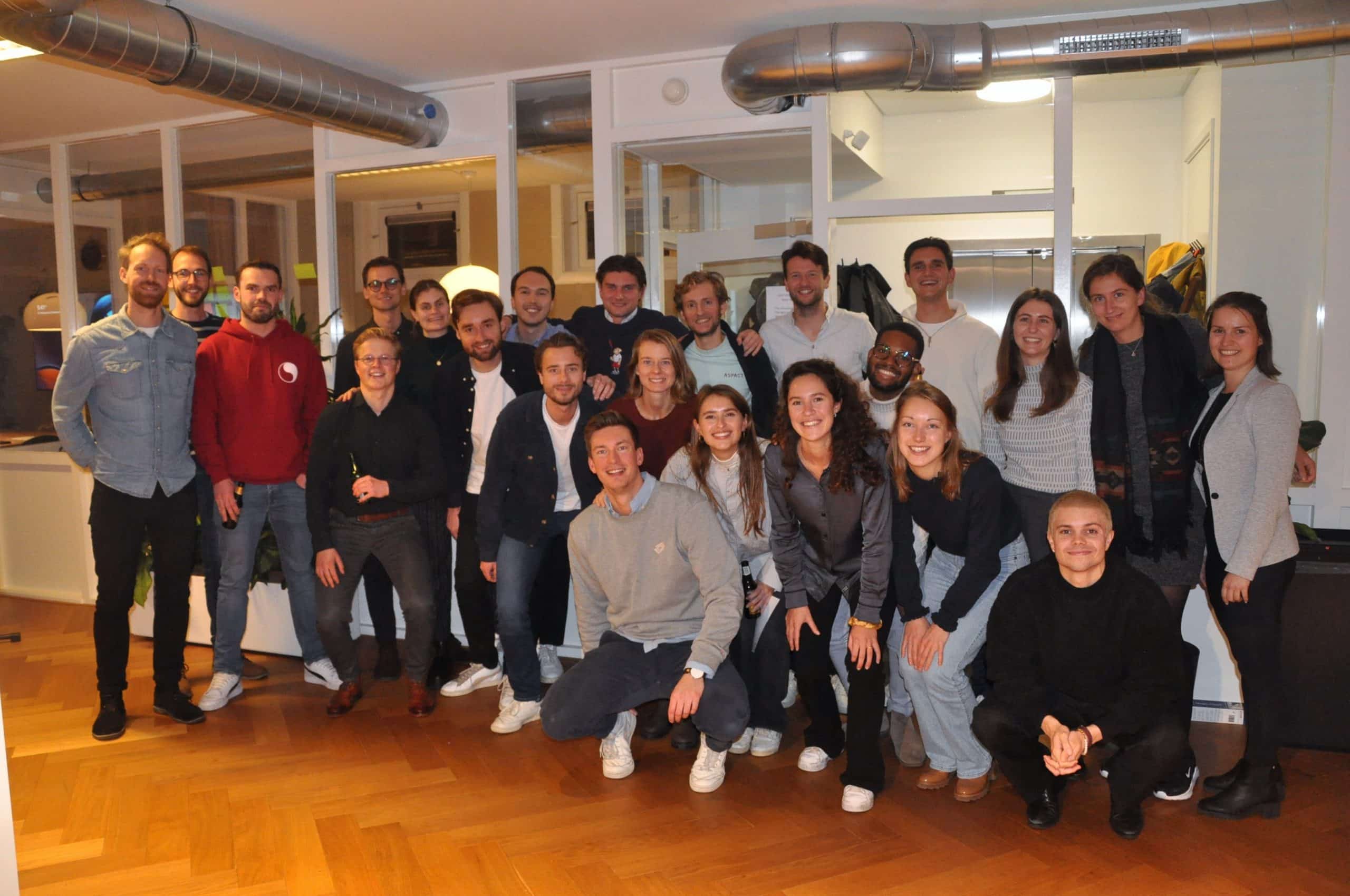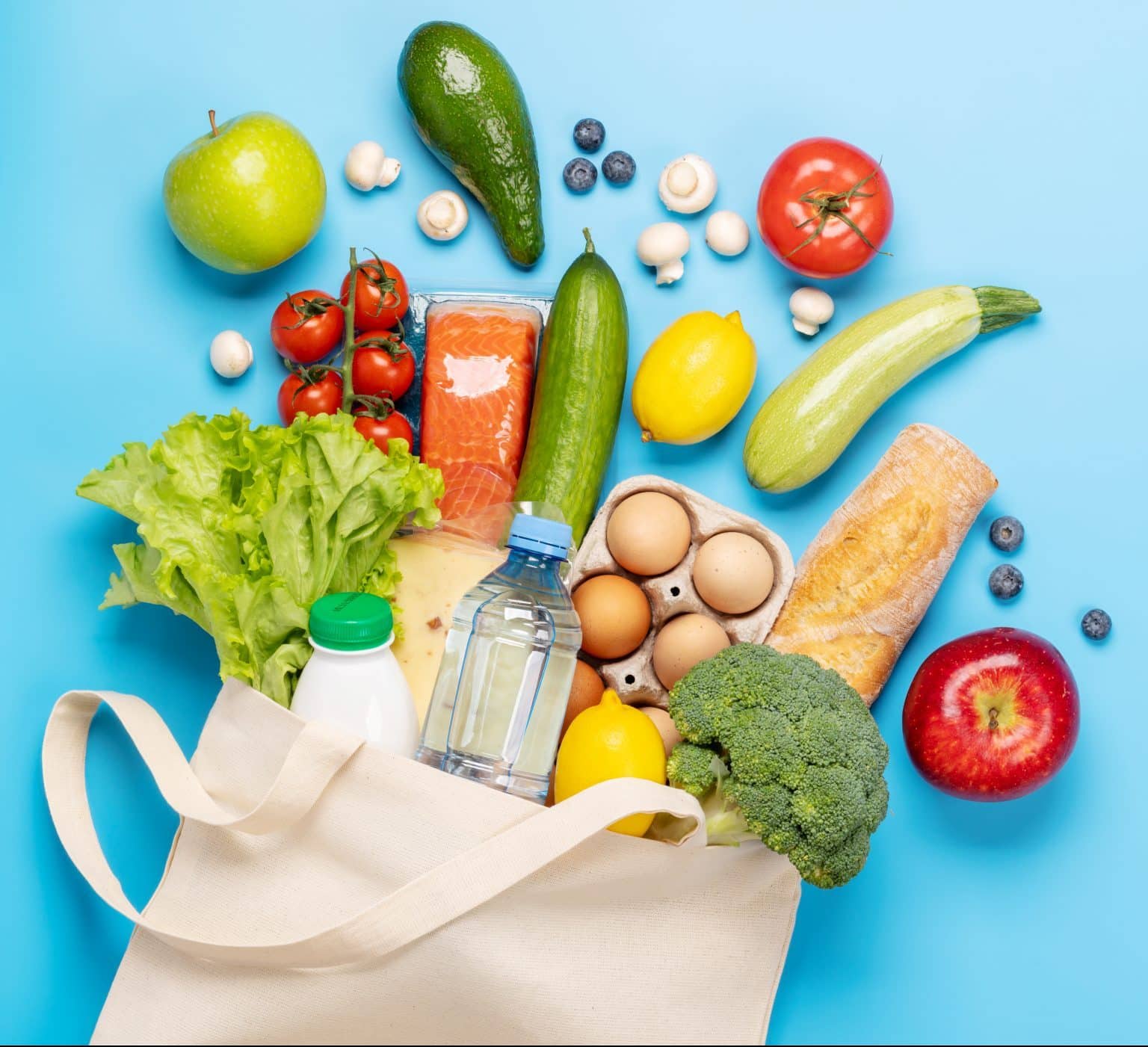As consumers, we have the power to make environmentally conscious decisions when it comes to the products we buy and the impact they have on our planet. But how do we know which products are more sustainable and have lower greenhouse gas emissions? Using open-source data sets and machine learning techniques, a group of ADC consultants developed a tool that can predict the carbon footprint of certain food products based on their ingredients. In this article, we will take a closer look at their process, the final product, and how it can be implemented by (online) grocery stores to improve transparency in food emissions.

An internal hackathon to develop a sustainable grocery shopping tool
Last year, a group of over 20 ADC consultants participated in a two-day internal hackathon. The opportunity provided a deeper understanding of our three competence centers: Strategy & Innovation, Advanced Analytics, and Data Engineering. The objective of the hackathon was to develop an open-source, scalable tool that would enable supermarkets to report meaningful climate impact metrics for any product. Thus, making it easier for consumers and businesses to make sustainable choices.
In preparation for the hackathon, we consulted climate scientist Bob van Oort, senior researcher at the CICERO institute in Oslo. With his help, we determined the direction of the challenge we posed for the hackathon. In addition, Dr. van Oort gave an inspirational presentation on the second day of the hackathon. He discussed how tooling and data driven insights can stimulate sustainable decision making in consumers, giving direction to each of the teams.
Each of the five teams designed, built, and brought into production a data science product. The focus of these products was on encouraging consumers to make more sustainable food choices. For example, one team developed a tool that predicts the carbon footprint of a product. A recommendation algorithm then gave direct feedback to consumers on how to make more sustainable food choices. The recommendation is based on their online grocery shopping purchase history.
“The food system stands for around one third of all global greenhouse gas emissions. Besides that, what we eat and produce has a large influence on the global environment. This includes both human and environmental health. Making changes in what we eat and how we produce is essential for a sustainable future.”
-Bob van Oort (Senior Researcher, CICERO institute)
A data-driven solution for sustainable grocery shopping
Following the hackathon, a working group was established to combine the various concepts and ideas into one solution. This provided an opportunity to analyse the data more thoroughly and try out more advanced models. The culmination of the working group’s efforts is a prediction model that estimates the carbon footprint of products using their ingredients as input.
In summary, the model uses natural language processing (NLP) to analyse the ingredients in text format and generates a prediction of carbon emissions. The model is trained on a selection of products taken from the open-source data base: Open Food Facts. Furthermore, the carbon emission data in this database comes from ADEME’s Agribalyse database. This database is widely recognised for its reliable Life Cycle Assessment data. The main component of the product is an API that external parties can use to input a list of ingredients and receive a carbon footprint estimate accompanied by a sustainability rating from low to very high impact.
The working group also developed a user interface that allows users to manually enter a list of ingredients. Subsequently, the model uses this information to generate a carbon footprint estimate. The final product provides a practical tool for companies and consumers to assess the environmental impact of their products and make more informed decisions.
“A climate footprint calculator can contribute to sustainable climate choices both for consumers, businesses, and producers. For consumers, a simple overview of emissions for key food categories can help with making climate friendly choices. For businesses and producers, more detailed data can help reduce emissions by identifying foods and activities with high emissions.”
-Bob van Oort (Senior Researcher, CICERO institute)
The benefits of a carbon footprint tool in grocery stores
For a company in the grocery retail sector, a tool that predicts climate footprint can be highly beneficial from both an environmental and a business perspective. An example of the type of user for this tool would be online grocery stores that want to become more sustainable and inform their customers on which products emit less GHG emissions. By providing this information to their customers, the stores can make them more aware of the impact their purchases have on the environment.
Additionally, the Dutch government is taking a proactive approach to address the carbon footprint of the food industry. One initiative to achieve this is the Carbon Footprint (CFP) program, which was developed to measure the amount of greenhouse gas emissions produced in the production, transportation, and sale of food products. By 2025, food producers will be required to determine the CFP per kilogram of nutrients for their products and make this information publicly available. Consequently, this allows consumers to make more informed decisions about their purchases.
Finally, the Netherlands committed to the Farm to Fork strategy, which was launched by the European Commission in 2020. The strategy aims to promote sustainable food consumption to facilitate the shift to healthy, sustainable diets. Given these developments, it is recommended for supermarkets to already start considering their carbon footprint. This ensures they stay in line with regulations and consumer demand for sustainable products.
“A digital tool has many advantages. It can be easily updated as more knowledge becomes available. Furthermore, it allows for monitoring changes and improvements over time.”
-Bob van Oort (Senior Researcher, CICERO institute)
What does it take to implement our tool?
In its current state, the model is designed to be general with the assumption that every (online) grocery store has a database containing product and ingredient lists. As a result, the only requirement for using the model is a list of ingredients per product.
Since the model is already trained using an open-source dataset, it is possible to directly implement the model into an organisation’s existing infrastructure. However, if an organisation has access to other labelled data, it can be further customised to meet their needs. For example, the option to recommend similar products with lower carbon footprints to customers. With more time and a concrete goal, the options are limitless.
Let's shape the future
Would you like to know more about Amsterdam Data Collective? Do you want to discover how we can help your grocery store become more data-driven while reducing its environmental impact? Get in touch with Julia van Huizen (Agriculture & Food Lead) or visit our contact page.

What stage is your organisation in on its data-driven journey?
Discover your data maturity stage. Take our Data Maturity Assessment to find out and gain valuable insights into your organisation’s data practices.







